For this week’s review, I took a recommendation from my cousins when I visited them on my spring break trip to Florida (which was much needed and way too short). When I saw them at Christmas and they said that Big Hero 6 wasn’t just for little kids and they were fully entertained, I was a little skeptical. However, their constant praise of the movie was able to influence me, and I couldn’t believe how well the film could combine so many emotions perfectly.
 When the audience is first introduced to Hiro Hamada, the fourteen year old protagonist of Big Hero 6, we see his lifestyle of competing in illegal bot fighting in the futuristic city of San Fransokyo. Worried that Hiro will is wasting his brilliance and talent, older brother Tadashi shows Hiro the robotics center at the university and his own project, Baymax, a “personal healthcare companion.” Hiro is impressed with the robotics work, and vows to be accepted to the school. He creates microbots, tiny robots controlled through brain waves, that configured into any arrangement possible, which fully impresses Professor Callaghan, the head of the robotics program. Hiro is instantly accepted to the university, but his ecstasy is destroyed when Tadashi and Callaghan are killed in a fire at the university.
When the audience is first introduced to Hiro Hamada, the fourteen year old protagonist of Big Hero 6, we see his lifestyle of competing in illegal bot fighting in the futuristic city of San Fransokyo. Worried that Hiro will is wasting his brilliance and talent, older brother Tadashi shows Hiro the robotics center at the university and his own project, Baymax, a “personal healthcare companion.” Hiro is impressed with the robotics work, and vows to be accepted to the school. He creates microbots, tiny robots controlled through brain waves, that configured into any arrangement possible, which fully impresses Professor Callaghan, the head of the robotics program. Hiro is instantly accepted to the university, but his ecstasy is destroyed when Tadashi and Callaghan are killed in a fire at the university.
After months of seclusion and depression, Hiro accidentally activates Baymax and becomes annoyed with his constant attention to Hiro’s condition. However, Hiro and Baymax are drawn to a warehouse after one of Hiro’s microbots, believed to be destroyed in the fire, acts strangely. At the warehouse, Hiro discovers a masked figure mass-producing microbots and using them for his own purpose. Angry that someone has stolen his idea, Hiro programs Baymax with a battle chip and builds him a suit of armor. Hoping to stop the masked man from ruling the world with the microbots, Hiro also designs super powers for Tadashi’s friends (Wasabi, Fred, Honey Lemon, and GoGo), and the six become a team that attempts to stop evil.
 The film works well in portraying Hiro’s emotions through the screen, making the audience feel exactly what he is going through. Whether it be anguish over losing a loved one, excitement of finding a new friend, or anger over someone stealing our idea, the audience relates to Hiro’s adventure and feels the same emotions. One of the main components of the film is the relationship between Hiro and Baymax. Even though Baymax is a robot (an inflatable, lovable one that resembles a marshmallow), he becomes a protector and dear friend to Hiro who helps him to cope with Tadashi’s death. The pair become a formidable team, and Baymax is effective in helping Hiro to heal from his sorrow.
The film works well in portraying Hiro’s emotions through the screen, making the audience feel exactly what he is going through. Whether it be anguish over losing a loved one, excitement of finding a new friend, or anger over someone stealing our idea, the audience relates to Hiro’s adventure and feels the same emotions. One of the main components of the film is the relationship between Hiro and Baymax. Even though Baymax is a robot (an inflatable, lovable one that resembles a marshmallow), he becomes a protector and dear friend to Hiro who helps him to cope with Tadashi’s death. The pair become a formidable team, and Baymax is effective in helping Hiro to heal from his sorrow.
The combination of so many elements of the movie is blended together so well that the film can appeal to any audience. The action scenes resemble those of other superhero movies (it should since Big Hero 6 is a Marvel property). You will probably find yourself crying or teary-eyed at least one time during the movie, which speaks to the ability of the movie to create characters we truly care for. The lighthearted humor, especially Baymax’s inability to understand human interactions, will be sure to make you laugh and love Baymax’s personality.
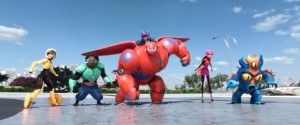 Overall, I thought Big Hero 6 was a great superhero movie that truly has a heart and has a sincere message of friendship helping us through our darkest times. After this movie, I have a feeling that you will want to have your own Baymax to be your companion. I give the film 4.5 stars out of 5.
Overall, I thought Big Hero 6 was a great superhero movie that truly has a heart and has a sincere message of friendship helping us through our darkest times. After this movie, I have a feeling that you will want to have your own Baymax to be your companion. I give the film 4.5 stars out of 5.
Images by Walt Disney Pictures.




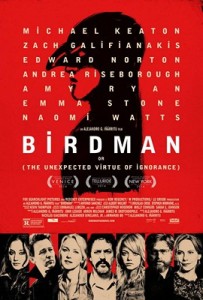

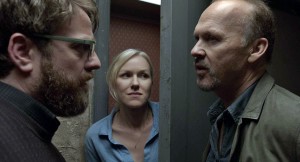





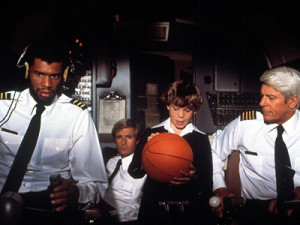



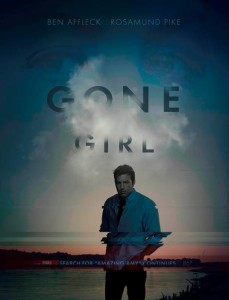 Gone Girl follows the events surrounding Amy’s disappearance on her five year wedding anniversary to her husband Nick (Ben Affleck). After Nick goes to the bar he owns with his twin sister Margo, he returns to find his house has been broken into, with a broken coffee table and blood splattered across the kitchen. Amy’s disappearance gains national attention, as she is the inspiration for her parents’ successful Amazing Amy series of children’s books. While the press is focused on Nick, his actions during press conferences and public events for Amy is heavily criticized. This causes the suspicion to turn to Nick, who appears sociopathic and lacking concern for his missing wife.
Gone Girl follows the events surrounding Amy’s disappearance on her five year wedding anniversary to her husband Nick (Ben Affleck). After Nick goes to the bar he owns with his twin sister Margo, he returns to find his house has been broken into, with a broken coffee table and blood splattered across the kitchen. Amy’s disappearance gains national attention, as she is the inspiration for her parents’ successful Amazing Amy series of children’s books. While the press is focused on Nick, his actions during press conferences and public events for Amy is heavily criticized. This causes the suspicion to turn to Nick, who appears sociopathic and lacking concern for his missing wife. As the events play out, we also witness flashbacks of Nick and Amy’s relationship, as told by Amy’s diary entries. While their relationship starts off well as lovers in New York City, Amy reveals that their marriage has begun to disintegrate. The two both lost their jobs in the recession, they become increasingly distant, and the couple move to Nick’s Missouri hometown to care for his sick mother. Once in Missouri, the pair have lost interest in each other, and Nick’s aggressive behavior is revealed in a fearful entry from Amy. This, along with evidence of the couple’s financial troubles, Nick’s lack knowledge of Amy’s social life, and a suspicious crime scene, causes Nick to become the prime suspect in Amy’s disappearance.
As the events play out, we also witness flashbacks of Nick and Amy’s relationship, as told by Amy’s diary entries. While their relationship starts off well as lovers in New York City, Amy reveals that their marriage has begun to disintegrate. The two both lost their jobs in the recession, they become increasingly distant, and the couple move to Nick’s Missouri hometown to care for his sick mother. Once in Missouri, the pair have lost interest in each other, and Nick’s aggressive behavior is revealed in a fearful entry from Amy. This, along with evidence of the couple’s financial troubles, Nick’s lack knowledge of Amy’s social life, and a suspicious crime scene, causes Nick to become the prime suspect in Amy’s disappearance. I thoroughly enjoyed Gone Girl, especially on its analysis of the news media and David Fincher’s direction. The film draws us into this twisted world, with dark lighting and unforgiving characters. Fincher, who also directed such films as Fight Club and The Social Network, adapts the novel into his bleak vision, allowing the audience to feel the tension and suspense of the story. The media’s fixation on Nick’s every moment reveals flaws in our own society, quick to assume and reach conclusions based on little evidence. The commentary on this issue, including a Nancy Grace impersonator, increases the magnitude of the plot.
I thoroughly enjoyed Gone Girl, especially on its analysis of the news media and David Fincher’s direction. The film draws us into this twisted world, with dark lighting and unforgiving characters. Fincher, who also directed such films as Fight Club and The Social Network, adapts the novel into his bleak vision, allowing the audience to feel the tension and suspense of the story. The media’s fixation on Nick’s every moment reveals flaws in our own society, quick to assume and reach conclusions based on little evidence. The commentary on this issue, including a Nancy Grace impersonator, increases the magnitude of the plot. Overall, I thought Gone Girl was a thrilling, twisting, and ominous experience. I wish I would have read the book before hand, but I still thought the story carried through beautifully. I give Gone Girl 4.5 out of 5.
Overall, I thought Gone Girl was a thrilling, twisting, and ominous experience. I wish I would have read the book before hand, but I still thought the story carried through beautifully. I give Gone Girl 4.5 out of 5.